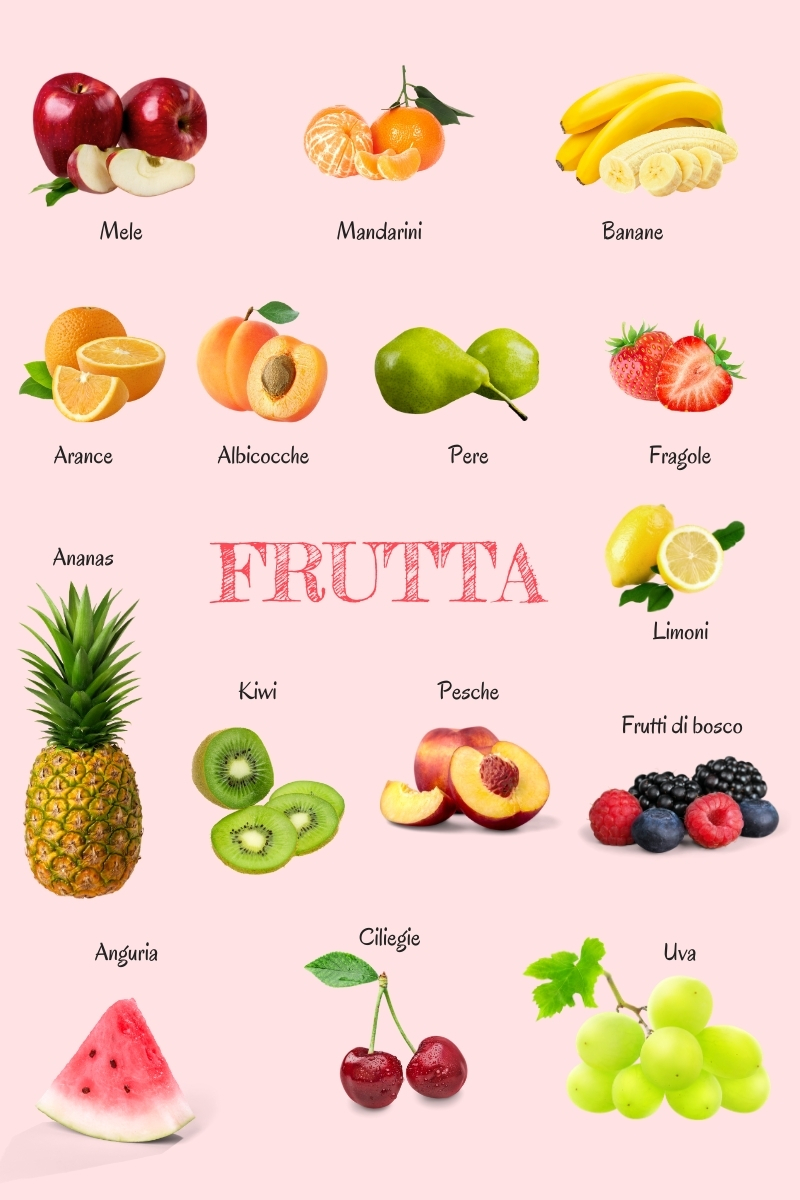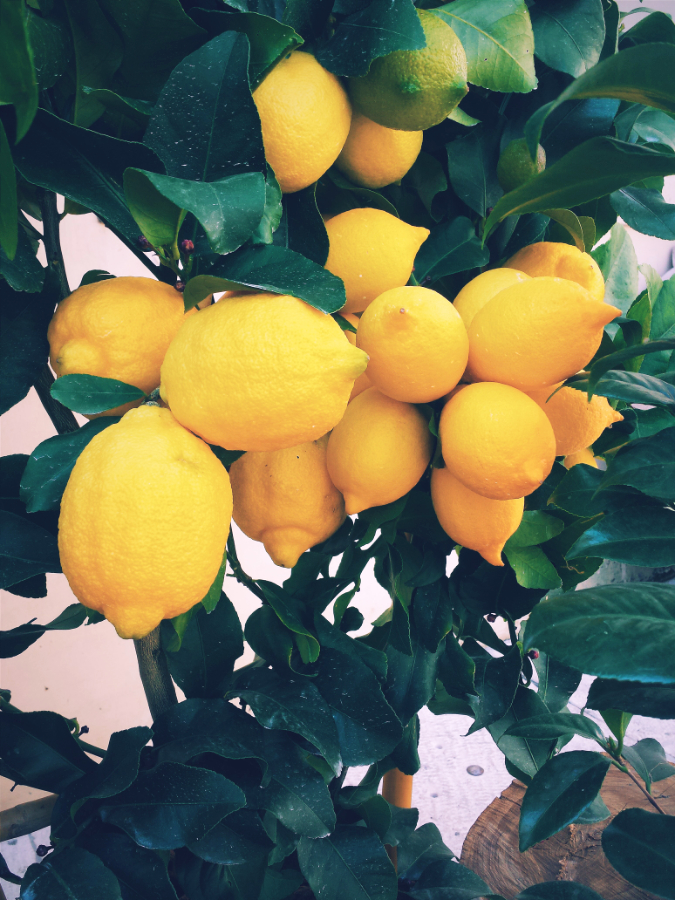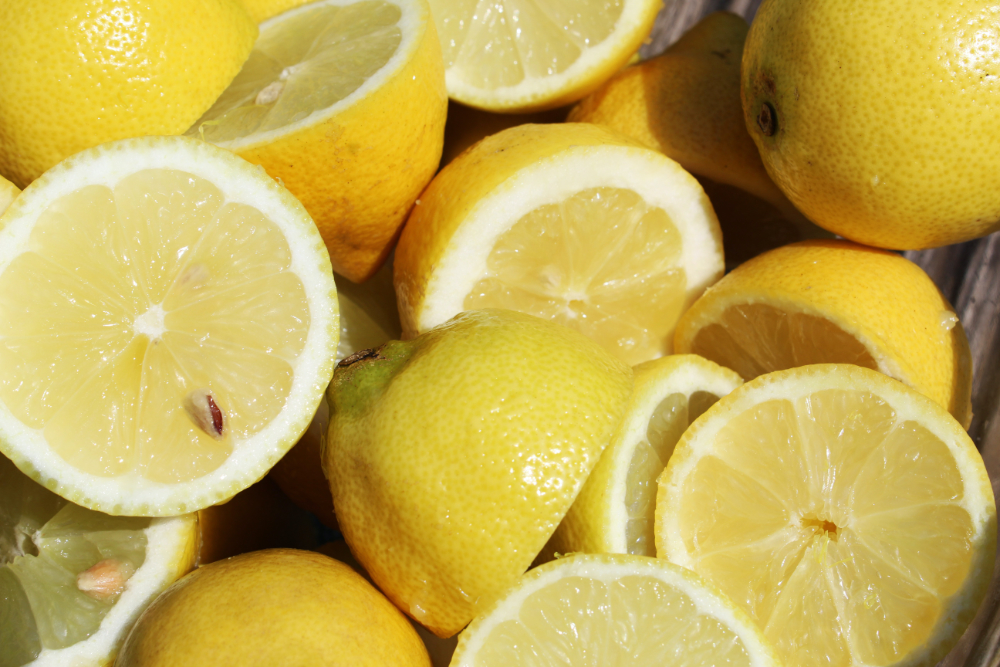Fruit in Italian

Fruit in Italian
Healthy, colourful, and full of sugar (of the good kind).
My favourite fruits are watermelon in the summer, raspberries in spring, and lemon throughout the year. I use lemons every day to flavour my endless cups of Earl’s Grey. I squeeze lemon on baked fish and grilled meat. I add lemon juice to salads, vegetables, and fruit. I also squeeze it on pasta, either with some oil, pepper, and herbs, but even with prawns, sardines, and smoked mackerel. I love lemon for its sour taste and for its colour too. GIALLO is my favourite colour. Lemon is extremely versatile, and its bright colour can only make you want to smile.
It is believed that lemon originated in India and its seeds were found in Mesopotamia dating back a whopping 4,000 years BC. Lemons landed in Italy, in the southern region of Sicily to be more precise, with the Islamic invasions around the 800-900s. Their cultivation has been thriving throughout the island ever since. Today, Sicily still sustains almost entirely the consumption of lemons in the whole country.
But lemon is not only an exceptional fruit. Learning about it can also add to your Italian vocabulary.
Learning about lemon can add to your vocabulary…
Qualities of lemons
Yes, these are attributes commonly used to describe lemons, but they can be used for many other fruits… and people 😉 Well, maybe not all of them but still…
Aspro: sour
Acido: acid. In Italian, this is a very popular term used to describe people in an informal way. I guess in English, you would say “bitter” or “grumpy” instead
Dolce: sweet. Both a person, a gaze, and the eyes can be sweet in Italian. Una persona dolce. Uno sguardo dolce, but the sky is the limit for this adjective. The idiom “fare gli occhi dolci”, which literally translates with “to make sweet eyes”, means “to make eyes at somebody” in English. So, if you want to pick up the next hot person down the road, make sure your eyes look sweet 😉
Succoso: juicy
Lemons belong to the family of citrus. In Italian that is “agrumi”. Other fruits belonging to this category are: arance (oranges), bergamotti (bergamots), cedri (citrons), clementine (clementines), lime or limette (limes), mandarini (mandarins), pomeli (pomelos), pompelmi (grapefruits).
Parts of the lemon
Buccia: peel
Semi: seeds
Scorza: rind
Spicchi: segments
Succo: juice
Popular lemon-based delicacies
Limonata: the famous lemonade drink made from water, lemon juice and sweetener to taste
Limoncello: a speciality liquor from the Naples area in the south of Italy, made with alcohol, lemon rinds, and sugar, this vibrant yellow drink is renowned worldwide
Granita di limone: lemon granita is a Sicilian speciality
Tè al limone: lemon tea is my everyday drink. I drink a lot of Earl’s Grey flavoured with plenty of fresh lemon.
Pasta: You can add lemon juice to all sorts of pasta dishes, both hot and cold, especially with seafood pasta. However, sometimes I like to keep things simple. Some olive oil, black pepper, and lemon juice. Tasty!

Even idioms are not immune to the use of lemons.
Spremere come un limone: to squeeze/press someone like a lemon means either to bleed somebody white or to give someone the third degree
Giallo come un limone: when you are “as yellow as a lemon”, you’re looking extremely pale
And a lemon curiosity…
In Italian we use the analogy of lemon for the verb limonare. This verb means to French kiss. There is more than one theory behind the origin of this verb. One of these theories, which seems quite plausible, is that the movement of lips and tongues when French kissing resemble the movements of one’s hand when squeezing a lemon.
And so we’ve come to the end of the lemon handbook. But lemon is just one of many fruits, of course. Check out the visual above to find out the Italian names of all sorts of fruit.

Limoni gialli!

